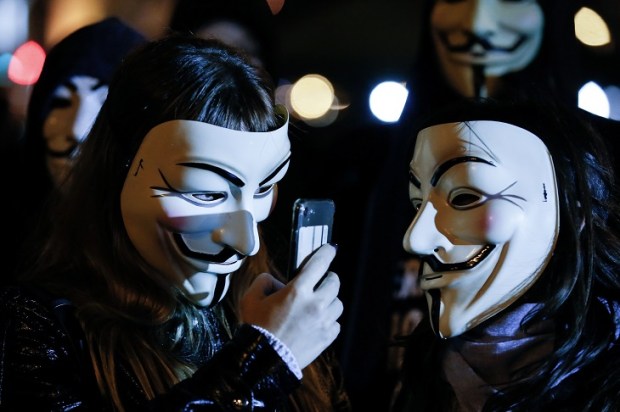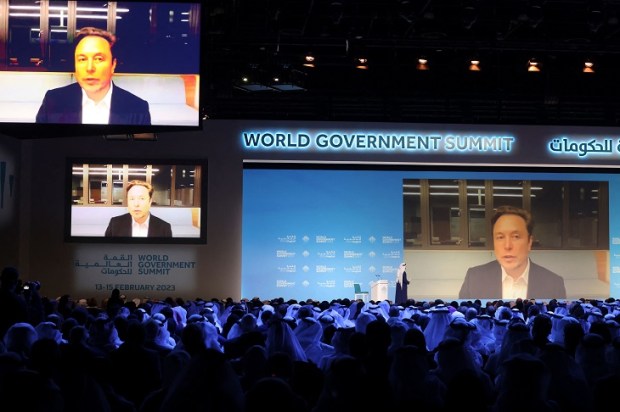It’s that time of year again! Our globalist wannabe overlords have emerged fresh from their meeting in Davos, Switzerland, to lecture us on the threat of climate change.
Klaus Schwab and his buddies at the World Economic Forum have been working overtime through January to refine their agenda and ensure it is enacted by leaders as they disperse back into the world. There are some Aussies in the mix, including former Prime Minister and newly appointed US Ambassador Kevin Rudd. (You can torture yourself with his panel here.)
While many concerning topics were tabled at Davos, there is one that takes precedence and must be discussed urgently, primarily because it pertains to Australia.
When it comes to the future of online censorship, we should familiarise ourselves with the work of Australian eSafety Commissioner Julie Inman Grant. Grant is the leader of what is described as ‘the world’s first government regulatory agency committed to keeping its citizens safer online’.
She has a history of working for the big end of town, having started her career within the United States Congress in DC before moving to Microsoft for 17 years. In her time at Microsoft, she worked in government relations, eventually rising through the ranks to serve as the Global Director for Safety and Privacy Policy and Outreach. After working for the company that made Bill Gates his fortune, she took on a prominent role at Twitter.
Grant was heavily involved in Twitter policy, safety, and philanthropy programs across Australia and New Zealand at a time when conservative views were being silenced on various social media platforms, particularly in Australia and New Zealand whose leaders both flirted with controlling online speech.
She said at a previous World Economic Forum event:
‘What we’re saying is this era of technological exceptionalism has got to end. […] I think we’re going to have to think about a recalibration of a whole range of human rights that are playing out online – from freedom of speech, to the freedom to be free from online violence, or the right of data protection, to the right to child dignity.’
As eSafety Commissioner, Grant also serves on the WEF’s Global Coalition for Digital Safety and their XR Ecosystem Governance Steering Committee on Building and Defining the Metaverse. eSafety also works with the White House Gender Policy Council and the Danish Government on the Global Partnership for Action on Gender-Based Harassment and Abuse.
Let’s take a deep dive.
Julie Inman Grant has previously referred to herself as a ‘safety antagonist’ with an interest in pushing what she terms ‘Safety by Design’.
‘Safety by Design’ is the idea that slow-footed government regulators cannot keep up with innovation in online technology. Rather than chasing after the tech industry, government wants to ensure that their ideological preferences are built into technology they wish to regulate. In Grant’s ideal world, if a company wanted to operate in a country that uses the ‘Safety by Design’ framework, it would be required to abide by ‘basic online safety expectations’ which would be established by the eSafety Commissioner and the WEF. This is very similar to how feature films are distributed across the world in accordance with viewer guidelines and rating systems.
Many criticise this approach to the online forum as censorship by stealth. After all, speech is not a product, it is a right.
The eSafety website has an ‘enterprise’ training course dedicated to ensuring companies understand and maintain Safety by Design expectations and procedures. One of the modules focuses on ‘Online Harms’. This section tells companies they must suppress things such as hate speech, misinformation and disinformation, individual identity attacks, and conspiracy content. It also highlights how ‘offline inequalities can be magnified online’, listing such inequalities as ‘sexism, misogyny, racism, xenophobia, religious discrimination, ableism, ageism, homophobia, transphobia, biphobia, and inter-phobia’. It then proceeds to go down the rabbit hole of intersectionality.
As you can no doubt ascertain, the ‘Safety by Design’ philosophy has the potential to turn every tech company around the world into a Woke safe space free from conservative viewpoints where users have no danger of coming into contact with challenging ideas in any way, shape, or form.
eSafety even has a page on their website dedicated to ‘supporting journalists to engage safely online’ which discusses how journalists are exposed to and targeted with abuse, especially online. It even goes so far as to state that:
‘Journalists covering controversial topics or events are also more at risk than others, and female journalists are most likely to experience abuse when covering feminism and women’s rights, traditionally “male-dominated” topics such as sports, politics and human rights, and sensitive and divisive content such as refugee and migration policies, race issues, and reporting about right-wing groups and activities.’
Interestingly, the ‘Safety by Design’ concept has failed to catch on in Grant’s former place of work. The organisation most keen on the idea is the World Economic Forum, which has covered it repeatedly. Social media customer bases and, indeed, citizens in general are far less interested in adding layers of censorship to an already suffocated environment. If anything, the Age of Censorship is going into reverse now that Elon Musk has purchased Twitter.
The WEF appointed Grant to the Global Coalition for Digital Safety and remain committed to the idea. The Coalition outlines its Mission as follows:
‘The Global Coalition for Digital Safety aims to accelerate public-private cooperation to tackle harmful content online and will serve to exchange best practices for new online safety regulation, take coordinated action to reduce the risk of online harms, and drive forward collaboration on programs to enhance digital media literacy.’
But just what exactly constitutes ‘harmful content’? One look at the description of the Coalition explains it pretty clearly:
‘With the growing challenge to counter health misinformation, violent extremist and terrorist content, and the exploitation of children online, there is an urgent need for more deliberate global coordination to improve digital safety.’
While it’s great that they’re targeting the exploitation of children online, which is a significant issue that must be addressed and dealt with accordingly, it seems apparent that the Coalition is far more concerned with cracking down on ‘health misinformation’ and ‘violent extremist and terrorist content’, which sounds okay on the surface until you realise that a terrorist might be someone who speaks against vaccine passports or gender-affirmation surgery. Definitions matter.
The Coalition is made up of three key areas, each headed up by high-profile bureaucrats and corporate employees. The first is Global Principles on Digital Safety, headed my Microsoft’s Chief Digital Safety Officer Courtney Gregoire, and Iain Drennan, the Executive Director of WEProtect Global Alliance, of which Julie Inman Grant is also a member. The second is the Toolkit for Digital Safety Design Interventions and Innovations, headed by Grant and Adam Hildreth, founder of Crisp. And the third is the Digital Safety Risk Assessment Framework, headed by Chief Technology Officer of Ofcom Sachin Jogia, and Executive Director of the Digital Trust and Safety Partnership David Sullivan.
Each of the branches that make up the Coalition are part of the WEF’s ‘Shaping the Future of Media, Entertainment and Sport’ platform, which lists the Coalition, ‘Defining and Building the Metaverse’, both of which Grant takes part in, and ‘The Power of Media’, which pushes ‘diversity, equity and inclusion’, as its key initiatives.
If the World Economic Forum is able to use its lobbying power to influence the media and entertainment industry, our world will take a giant leap closer to the dystopia of 1984, where the establishment controls every aspect of human life itself, including the truth.
I will close by leaving you to with Grant’s words in which she famously compared creating online safety measures to protect people against Covid as a vaccine for the internet. Here is what she said:
‘What we need now is the equivalent of an internet vaccine. We could say the Covid world of masks, sanitizing and social distancing has its parallels in the online world – things like parental controls, honest conversations with our children, and managing their devices and screentime. They each provide some level of protection. However, in the fight against Covid, nothing has been more effective than the systemic response our bodies generate from a vaccine. We need the same jolt for our technology ecosystem, up and down the stack. We need stronger immunity for our children against the ills of the internet, and building safety into our technology, just like providing that systemic protection of vaccines, is the most powerful thing we can do. The good news is we already have the vaccine, and we may have several more in development. We already have the tools that allow companies to build safety into their apps and online platforms. We call it Safety by Design.’
But just like the Covid vaccine, this would-be a concoction full of unintended consequences and serious harm.
We don’t need to vaccinate the internet. We need to vaccinate ourselves against globalism.
Joel Agius is an independent writer. If you would like to read more of his work, you can do so at JJ’s Outlook or keep up to date with his musings on Twitter.

























